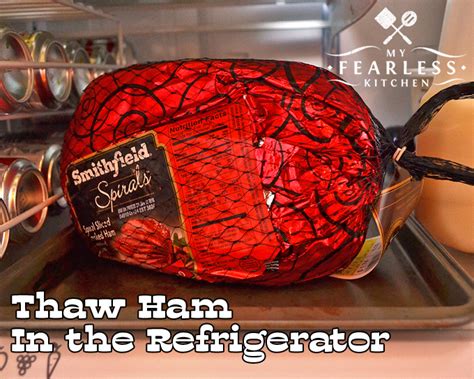From Freezer to Feast: Perfect Ham Thawing Techniques for a Delicious Holiday Meal
Thawing a ham correctly is crucial for ensuring a safe and delicious meal. A rushed thaw can lead to uneven cooking and potentially harmful bacteria growth, while a slow, proper thaw guarantees a succulent, flavorful ham ready to grace your holiday table. This comprehensive guide will cover everything you need to know about thawing a ham safely and efficiently, from understanding the different thawing methods to addressing common concerns. We’ll even tackle some frequently asked questions to help you become a ham-thawing expert!
How Long Does It Take to Thaw a Ham?
The thawing time depends significantly on the ham's weight and the thawing method employed. A general rule of thumb is to allow approximately 24 hours for every 5 pounds of ham. However, this is just an estimate; always check the ham's weight and follow the specific thawing instructions based on your chosen method. Failing to adequately thaw your ham can result in uneven cooking and potentially unsafe eating conditions.
Thawing a Ham in the Refrigerator: The Safest Method
This is the USDA's recommended method, and it's the safest way to ensure your ham thaws evenly and prevents bacterial growth.
- Process: Place the ham, still in its original wrapper, on a tray or plate in the refrigerator. Allow ample space around the ham for proper air circulation.
- Time: Plan ahead! Refrigerator thawing requires significant time—approximately 24 hours for every 5 pounds.
- Safety: Refrigerator thawing maintains a consistent cold temperature, minimizing the risk of bacterial growth. This method guarantees a safe and delicious ham.
Thawing a Ham in Cold Water: A Faster Approach
This method is faster than refrigerator thawing but requires more attention.
- Process: Submerge the ham, still in its original wrapper, in cold water in a large container or sink. Change the water every 30 minutes to maintain a consistently cold temperature.
- Time: This method thaws a ham considerably faster than refrigerator thawing – roughly 30 minutes per pound.
- Safety: While faster, this method necessitates close supervision to prevent the ham's temperature from rising above safe levels. Always ensure the water remains cold.
Can I Thaw a Ham at Room Temperature?
No, absolutely not. Thawing a ham at room temperature is extremely risky and should never be attempted. Room temperature allows bacteria to proliferate rapidly, potentially leading to foodborne illness. Always choose a safe thawing method, prioritizing refrigerator thawing.
What About Microwave Thawing?
While microwave thawing is possible, it's generally not recommended for large hams due to the potential for uneven thawing and cooking. If you must use this method, ensure you follow the manufacturer's instructions precisely. It's often more practical to use the microwave to finish cooking a partially thawed ham.
How Do I Know When My Ham is Fully Thawed?
A fully thawed ham will be pliable and have a consistent temperature throughout. You should be able to easily insert a knife into the ham without resistance. If any parts remain frozen, continue thawing using your chosen method.
What to Do with Leftover Cooked Ham?
Properly stored leftover ham remains safe to eat for 3-4 days in the refrigerator. You can enjoy it in sandwiches, salads, or as part of other delicious dishes. Remember to always refrigerate it promptly after cooking.
Is it Safe to Refreeze a Thawed Ham?
Technically, you can refreeze a thawed ham, but it’s not recommended. The quality and texture may be compromised, resulting in a less desirable final product. It is best to plan your meal around the amount of ham you intend to cook at once and avoid refreezing.
How Can I Tell If My Ham Has Gone Bad?
An off-putting odor is a clear sign that your ham has spoiled. Also, look for signs of unusual discoloration, stickiness, or slime. When in doubt, throw it out – your health is far more important than saving a potentially unsafe piece of meat.
By following these guidelines, you can confidently thaw your ham, ensuring a safe and delicious meal for you and your loved ones. Remember, patience and proper technique are key to a perfect holiday feast!

